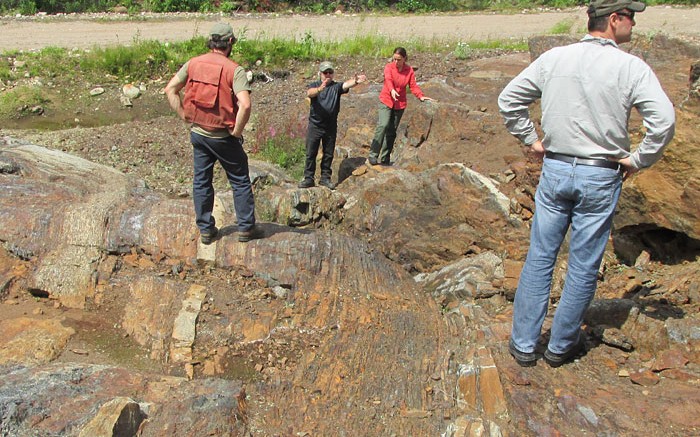The Quebec government — through Investissement Québec — is investing $2 million to become a shareholder in Arianne Phosphate (TSXV: DAN; US-OTC: DRRSF) and its Lac à Paul deposit, one of the largest greenfield phosphate-rock projects in the world, with a $1.9-billion net present value.
“During the last election, I said that our government would support the Arianne phosphate project,” Quebec Premier Philippe Couillard announced on Sept. 15. “Today we move from words to action. By partnering in this important initiative, we promote the development of the Plan Nord, which has great potential for creating wealth for Quebec.”
The $2-million investment makes up 25% of an $8-million financing package the company made public in July. “The financing from the government shows potential partners that the government in interested in moving this project forward and will help to the extent that it can,” Pierre Fitzgibbon, the company’s executive chairman, says in an interview. “It will have a significant impact on attracting strategic partners. We’re looking for partners, whether it’s an off-take partner who will want to take our rocks, or whether it’s a concern interested in converting the concentrate to fertilizer.” Fitzgibbon says the company hopes to find such partners by the end of 2015.
Jean-Sebastien David, the company’s chief operating officer, said the funds from the recent financing would be used for a number of different purposes, including moving the project through the formal public hearing process, continuing negotiations with the First Nations and improving on the project’s operating expenses.
David says the company is still waiting to hear what the formal date will be for the start of the public hearing process, but believes it is likely to get underway in late November or early December and could wrap up in April or May 2015. He believes Arianne can sign memorandums of understanding with three First Nations groups before the end of 2014 and that internal studies on reducing opex have lowered it from the US$94 per tonne (transport included) outlined in the bankable feasibility study to US$84 per tonne.
“We’re targeting a 10–15% reduction on opex from the bankable feasibility study,” Fitzgibbon says, “and a portion of that has already been done, but there is still some work to be done, and we’re highly confident that we’re going to get there.”
As for its work on concluding impact-benefit agreements with the First Nations groups, David concedes those will take longer but is optimistic that it can be done. “The process started at the community level two years ago,” he says. “They know us and they support the project very much because for them it’s a great opportunity for their community — having jobs, having training — they’re looking for that kind of opportunity.”
Independent studies forecast that the Lac à Paul project, 200 km north of Saguenay, will provide more than $12.5 billion in economic benefits to the region. It is expected to create more than 2,200 jobs during the construction phase alone, with 1,000 direct and indirect jobs during its 25-year mine life.
The bankable feasibility study completed in October 2013 — based on a single open-pit and proven and probable reserves, within just the Paul zone of 472 million tonnes grading an average of 6.88% phosphorous pentoxide (P2O5), with a 3.5% P2O5 cut-off grade — outlined a nearly 26-year mine life. Initial capital costs were estimated at US$1.2 billion consisting of US$982.5 million for the mine and US$232.2 million for the concentrate transport system that would deliver the product to the deepwater Saguenay port.
In addition to the Paul zone, where measured and indicated resources stand at 590 million tonnes grading 7.13% P2O5 at a 4% cut-off grade and inferred resources tally 9.8 million tonnes of 5.89% P2O5, the company has resource estimates on a number of other zones at the project, including Manouane, Zone 2, Nicole, Traverse and South TraMan.
Fitzgibbon and David estimate that if all goes according to plan, construction will start in 2015 once all the permits are in hand and take until 2017, with the start of shipping concentrate by the beginning of 2018.
Over the last year the company’s shares have traded in a range of 88¢ and $1.69, and closed at 95¢. The company has nearly 93 million shares outstanding.


Be the first to comment on "Quebec government invests $2M in Arianne Phosphate"